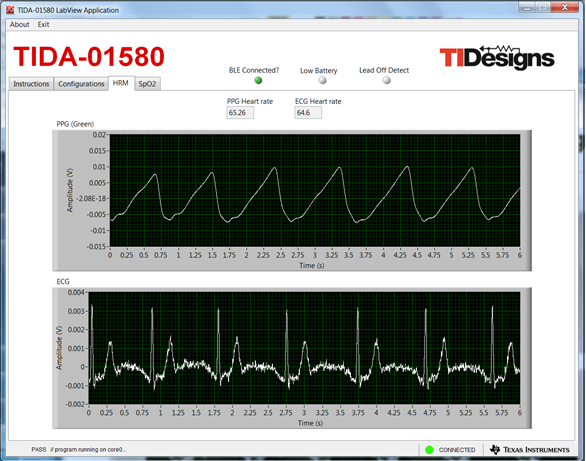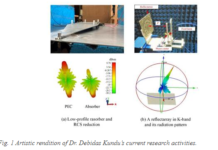
Electrocardiogram (ECG) or photoplethysmograph (PPG) wearable monitoring systems have become increasingly popular in recent years. Heart-rate monitors, pulse oximeters and activity trackers are commercially available and already play an important role in everyday life. A wearable monitor significantly improves patient comfort by replacing long, cumbersome cords with much less obtrusive dry electrodes that enhance mobility.
The wearable monitor market is experiencing rapid growth, fuelled by an increase in health awareness and the advent of improved monitoring services. Of specific importance is the Internet of Things (IoT) concept of tracking vital signs via mobile apps, with data transmission through the cloud to a doctor or health service. This concept, combined with machine learning and artificial intelligence, is expected to take fitness tracking and health monitoring to the next level by contributing to predictive analytics (and thus preventive care) to improve health and reduce health care costs.
A PPG takes optical measurements of an organ’s volume to estimate the oxygen saturation level in the blood (SpO2). There are two types of optical arrangements: transmissive and reflective. The transmissive case uses a bulky finger clip to transmit light through a light-emitting diode (LED) on one side of the finger and measures the absorption by placing a sensitive photodiode on the other side. The finger clip applies some pressure, which causes discomfort over time. In the reflective arrangement, the photodiode and LED are on the same side and the photodiode collects the light reflected from various depths underneath the skin without using the finger clip. This type of mechanism is easily incorporated into watches and other wearable devices that touch the body and do not cause any discomfort.
Conventional ECG monitoring uses a coupling gel on the sensing electrodes, which must be placed correctly on the patient’s body by a professional. Some patients develop allergic reactions and skin irritation when these electrodes are used for long-term ambulatory monitoring. Moreover, the gel also dries out over time, reducing signal quality and performance. In recent years, there has been a growing interest in using dry or ungelled electrodes for long-term physiological monitoring.
TI’s extensive portfolio supports emerging market trends. For example, the Wearable, Wireless, Multi-Parameter Patient Monitor Reference Design uses the AFE4900 single-chip bio-sensing front end for synchronized ECG and PPG measurements (see Figure 1). It integrates flexible LED drivers with complete receiver chains for the photo diodes. It communicates with the CC2640R2F SimpleLink Bluetooth® low energy Wireless MCU, which has an integrated Arm® Cortex-M3 and 2.4GHz radio-frequency (RF) transceiver, over Serial Peripheral Interface (SPI) (or I2C). The design supports wired data capture using a Joint Test Action Group (JTAG) connection, as well as wireless data capture, by sending it over Bluetooth® 5.
 Figure 1: Patient monitor reference design block diagram
Figure 1: Patient monitor reference design block diagram
The key components of the design are:
- Synchronized PPG and ECG measurement using the AFE4900. If the ECG and PPG are measured in a synchronized manner, the time difference between the R-peak (usually the highest peak observed) in the ECG waveform and the arrival of the PPG wave in the extremities is a measurement known as pulse transit time (PTT). The reference design provides synchronized raw data for designers to calculate heart rate, SpO2 and PTT. The AFE4900is distinctive in the market with its level of integration, low power and size, and offers flexibility with ultra-low-power modes and integrated first-in first-out (FIFO), which can keep the MCU in sleep mode to increase battery life.
- Wireless connectivity using the CC2640R2F. The CC264R2F integrated Arm Cortex-M3 plus 2.4GHz RF transceiver supports Bluetooth® 4.2 and 5.0 profiles and is also used as host processor. The internal DC/DC converter helps improve overall system efficiency and extend battery life. The built-in low-battery detection algorithm helps reduce external components in portable wearable applications.
- Low-power operation with a coin-cell battery. The design uses a single CR3032 (3V, 500mA coin-cell battery) and is tested to give 100 hours of continuous operation and a battery life of 30 days for every 1 second per minute of transmission.
A LabVIEW-based graphical user interface (GUI) is implemented for testing the reference design. Figure 2 shows measured ECG and PPG data on a remote terminal.
Figure 2: Heart-rate monitor data (using SFH 7072 sensor from OSRAM) and ECG data
The reference design was created for medical, personal health care and fitness applications, and comes with a design guide, schematic, layout and bill-of-materials files to help you quickly evaluate and accelerate product development. It facilitates real-time monitoring and data-logging capabilities and supports optimization for different configurations.
The article first published on the Texas Instruments Industrial Strength blog on June 29, 2018



















